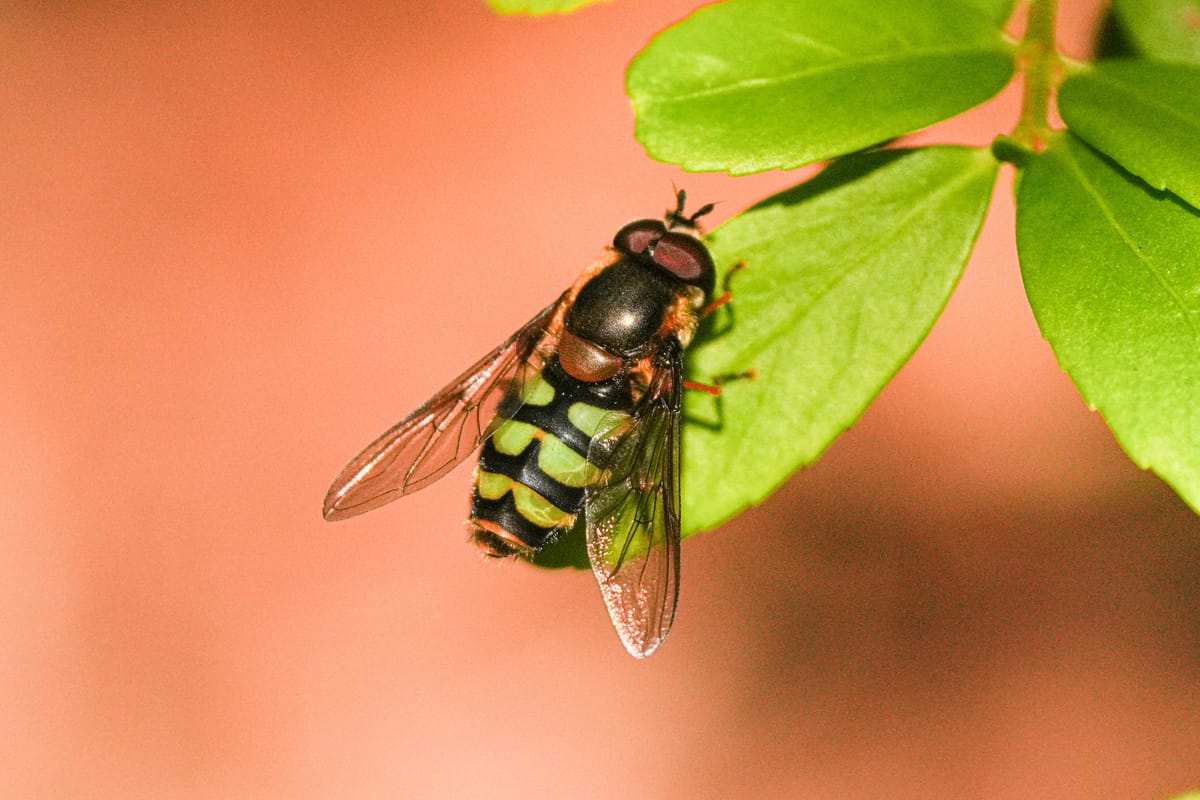August 3-9, 2025
What's up with this summer?!
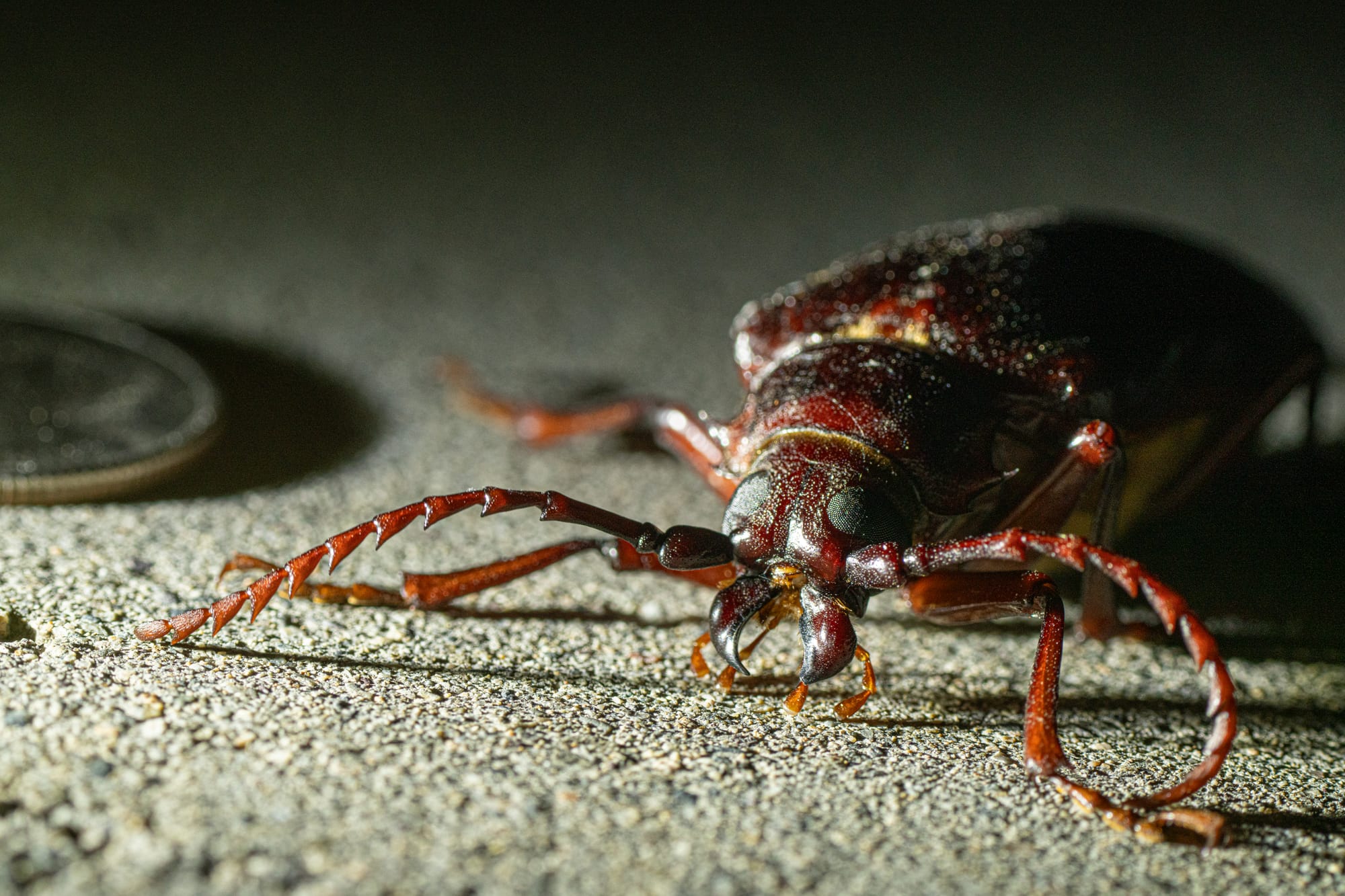
Another week of overcast skies, cold wind, thunder, and dashes of rain might leave you wondering what's happening with summer this year.
Week in Review
The days of mid- to late summer are a subtle time, but I started noticing signs of the changing seasons this week and I'm curious what you've been seeing.
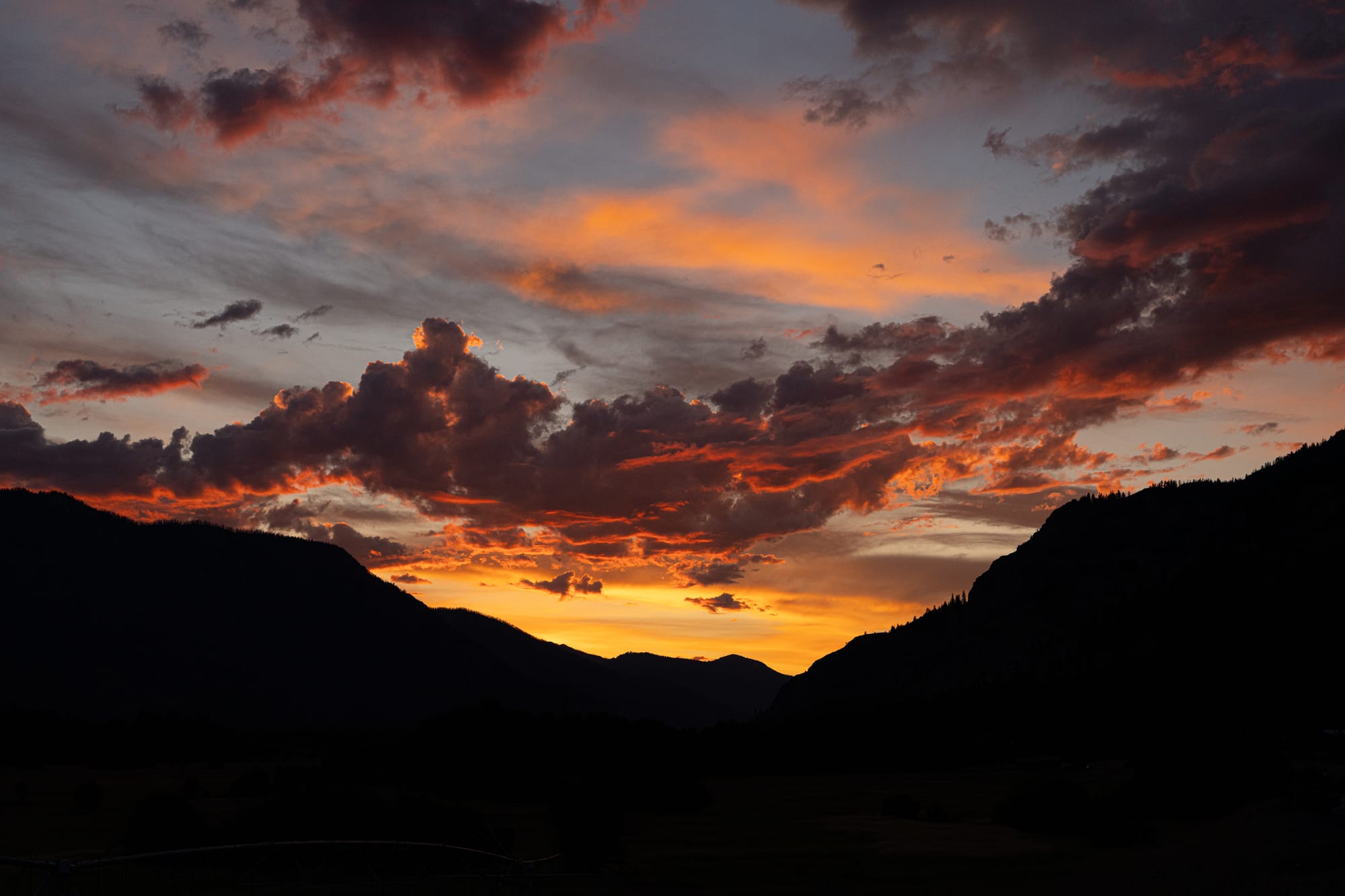
We still have a lot of summer ahead of us, with a stretch of very hot days looming in the forecast, but a growing number of plants are already shifting into their fall colors. Leaves turning yellow or red, and plants that produce bright red berries in late summer and early fall are becoming more and more noticeable every day.
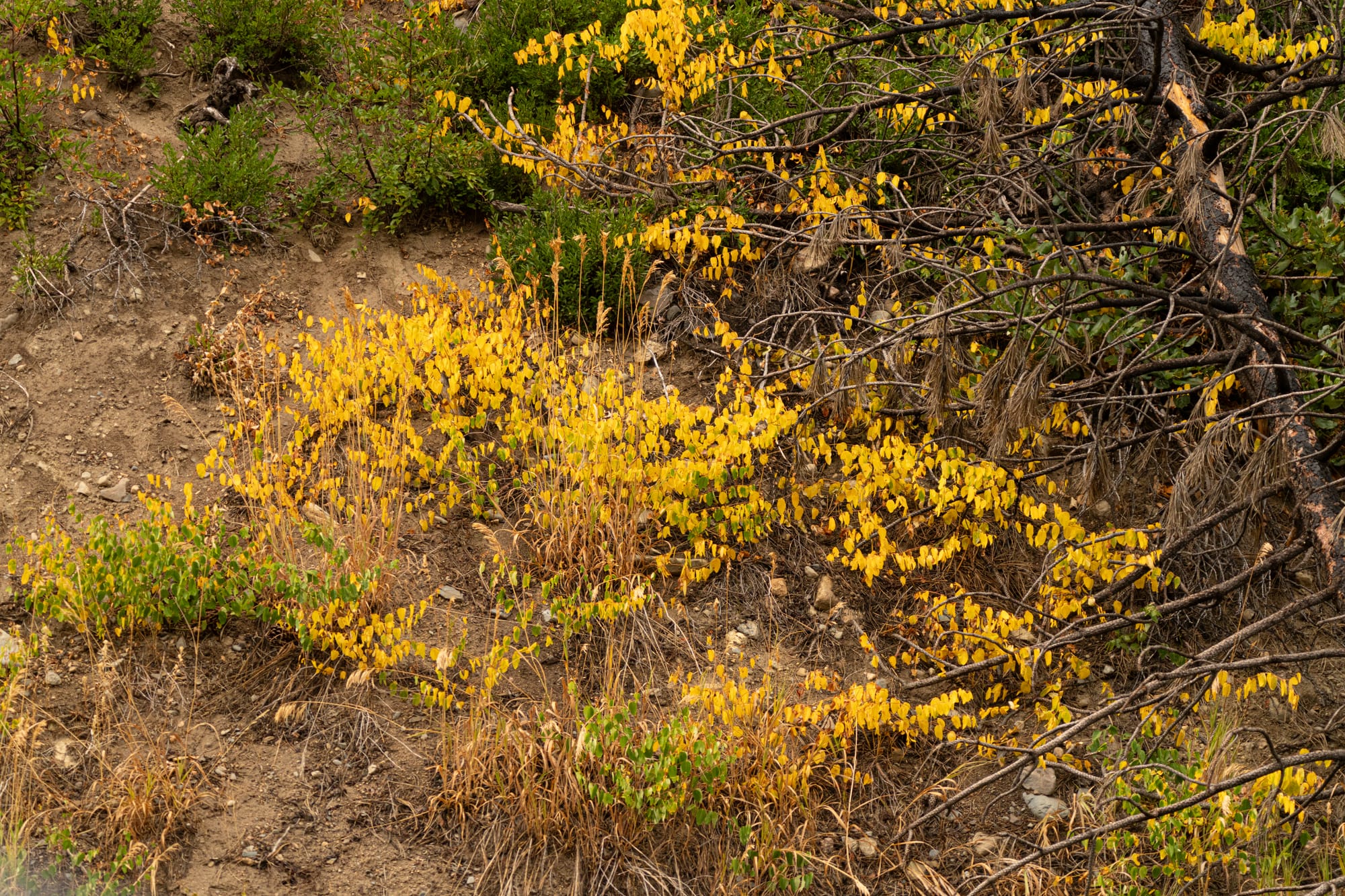
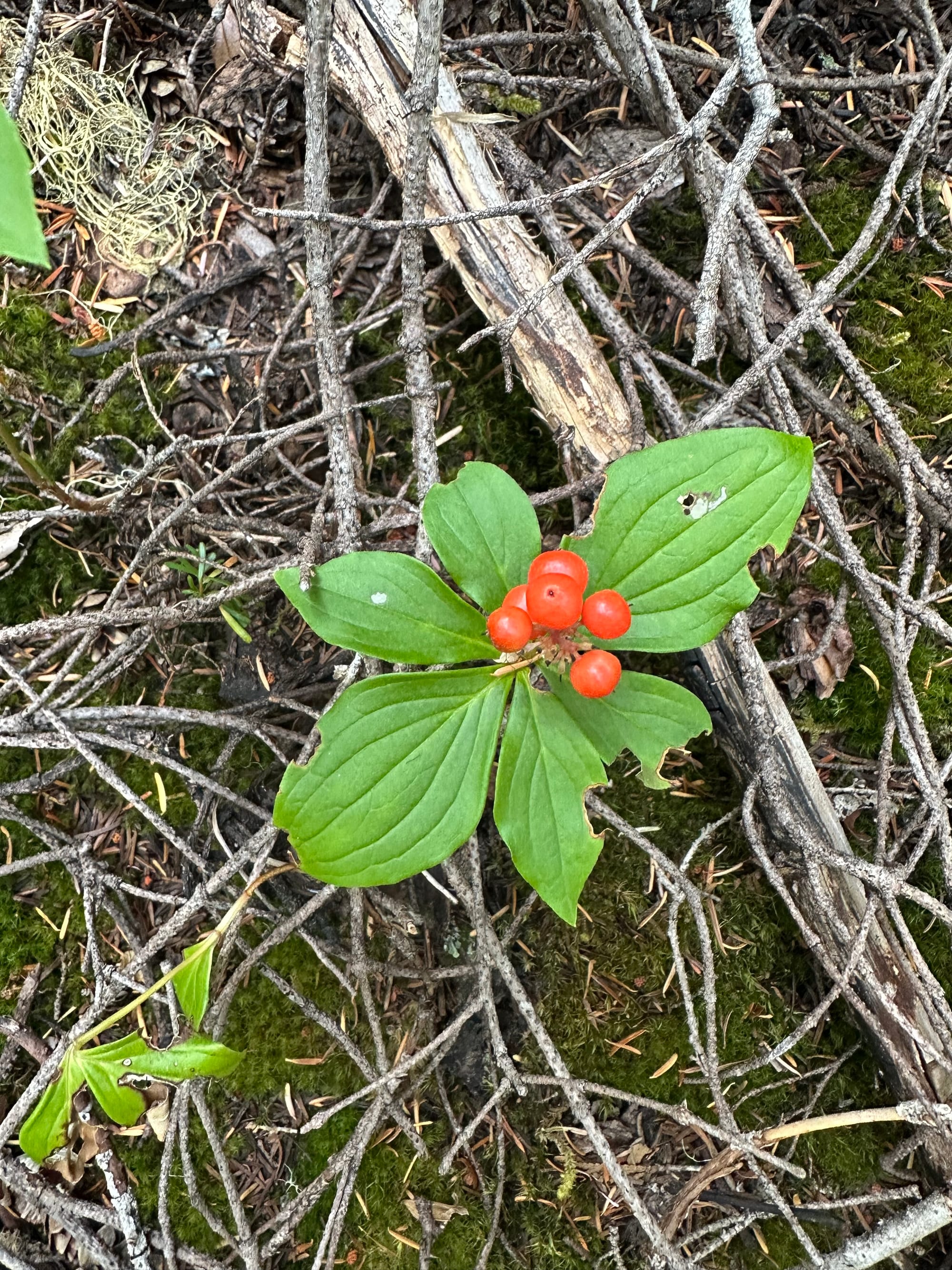
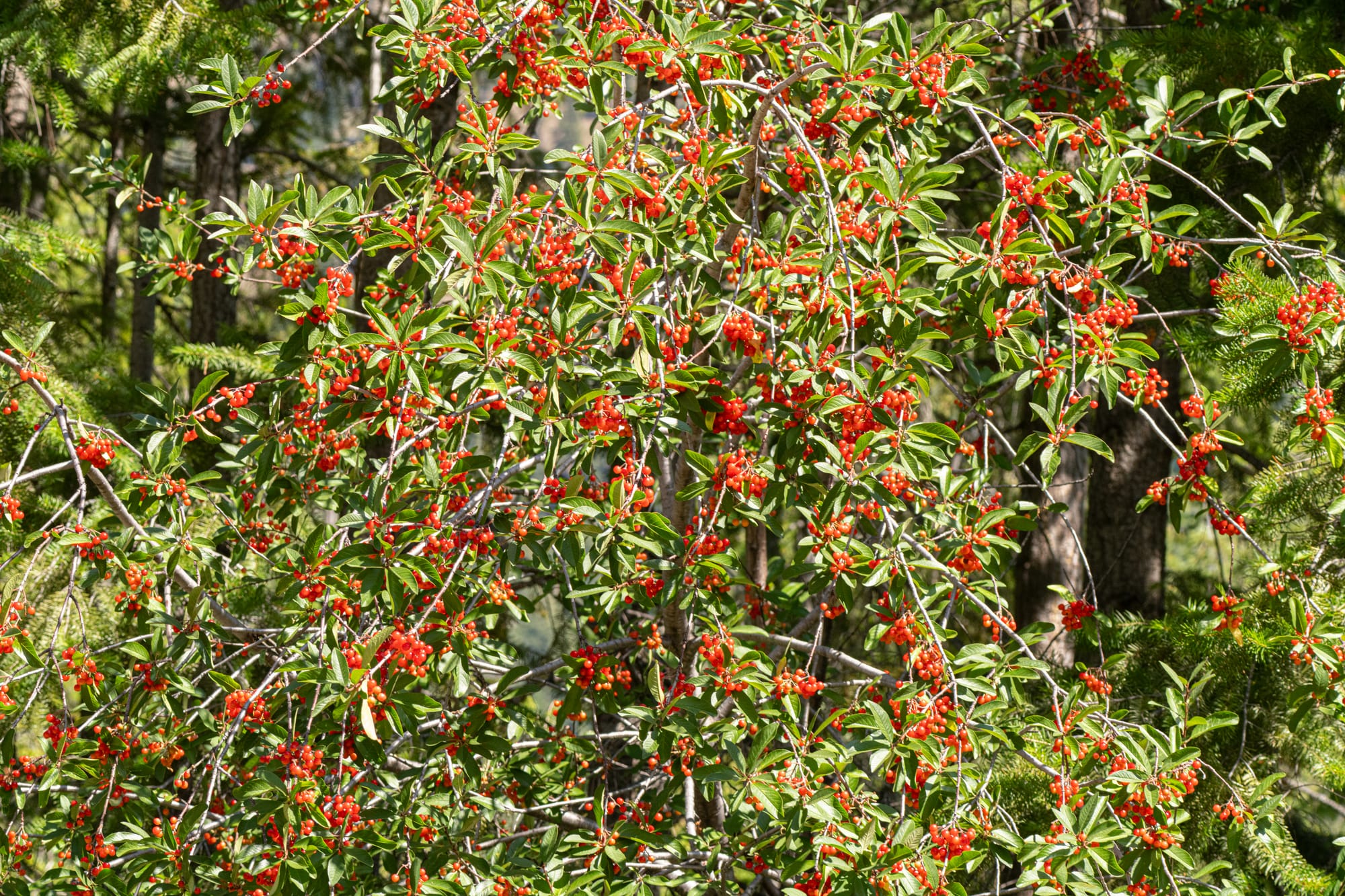
Some of my favorite things to look for in mid- to late summer are dragonflies, which can be abundant and conspicuous around water at this time of year. This is esepecially true in the late afternoon when you might spot dozens of dragonflies lit up like shining jewels as they dart back and forth catching tiny insects. It's almost impossible to photograph the scale and energy of this activity so you have to see it for yourself.
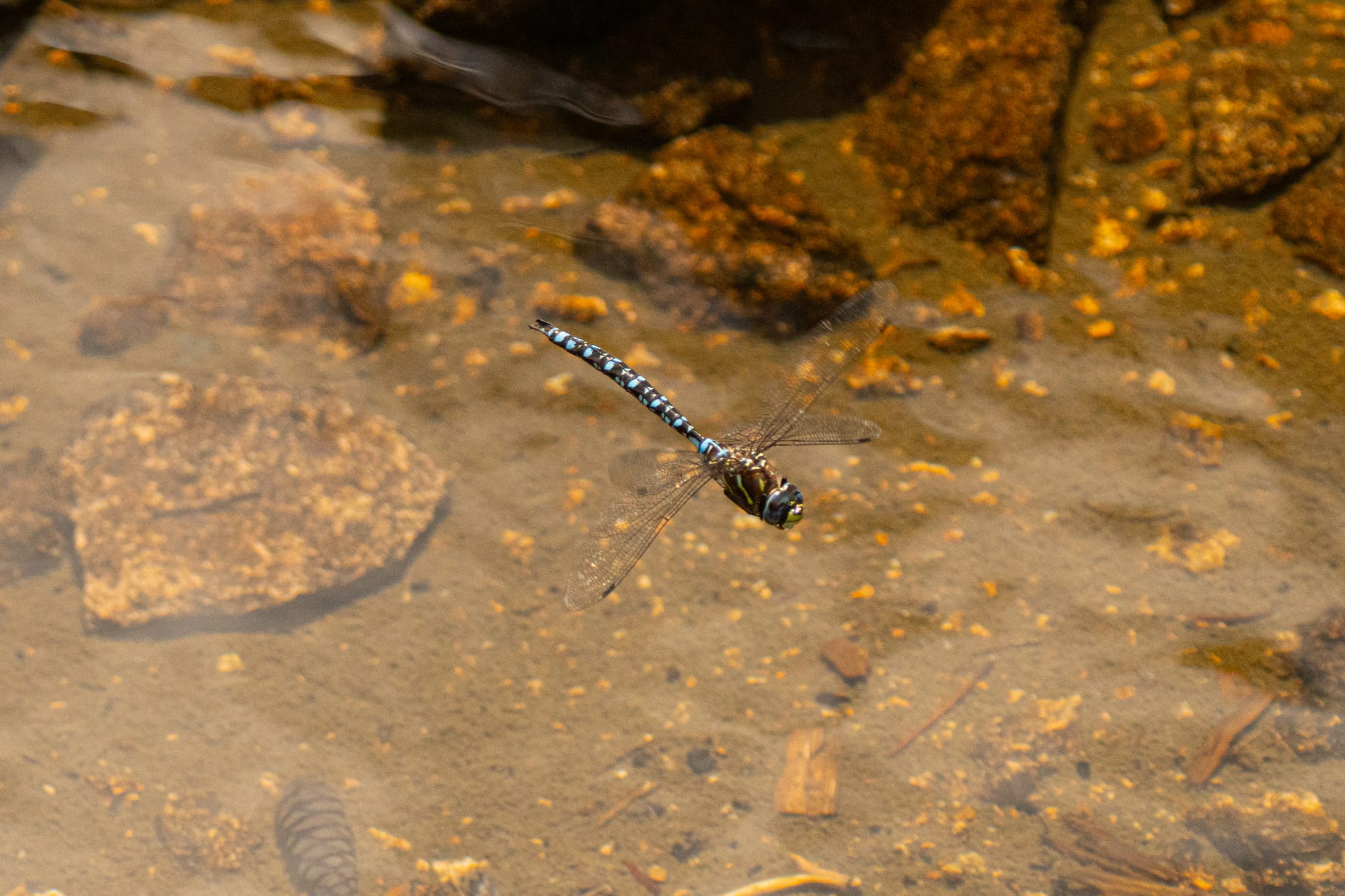
I've also begun to notice an increasing number of mixed-species flocks of birds feeding quietly as they move across the landscape. There might be a mixed group of sparrows moving through the bitterbrush and gathering on the ground, or there might be an odd mix of birds working together in the trees.
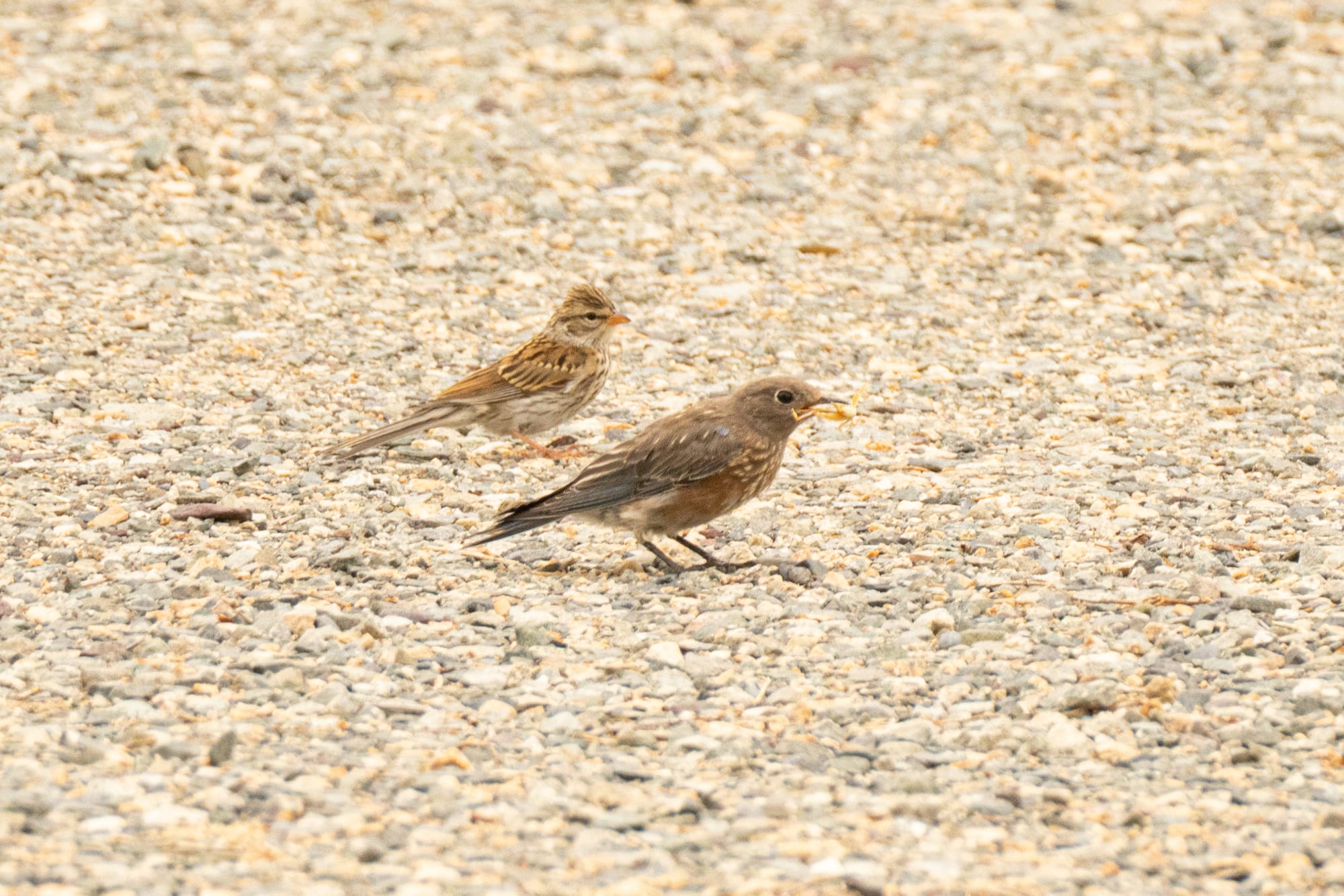
One gloomy, overcast day this week I was surprised by a large group in the yard that included yellow warblers, western tanagers, various sparrows and finches, western bluebirds, black-capped chickadees and other birds. These groups are a clear sign that the breeding season is over and birds are more interested in safety and security as they eagerly seek food in preparation for migration.
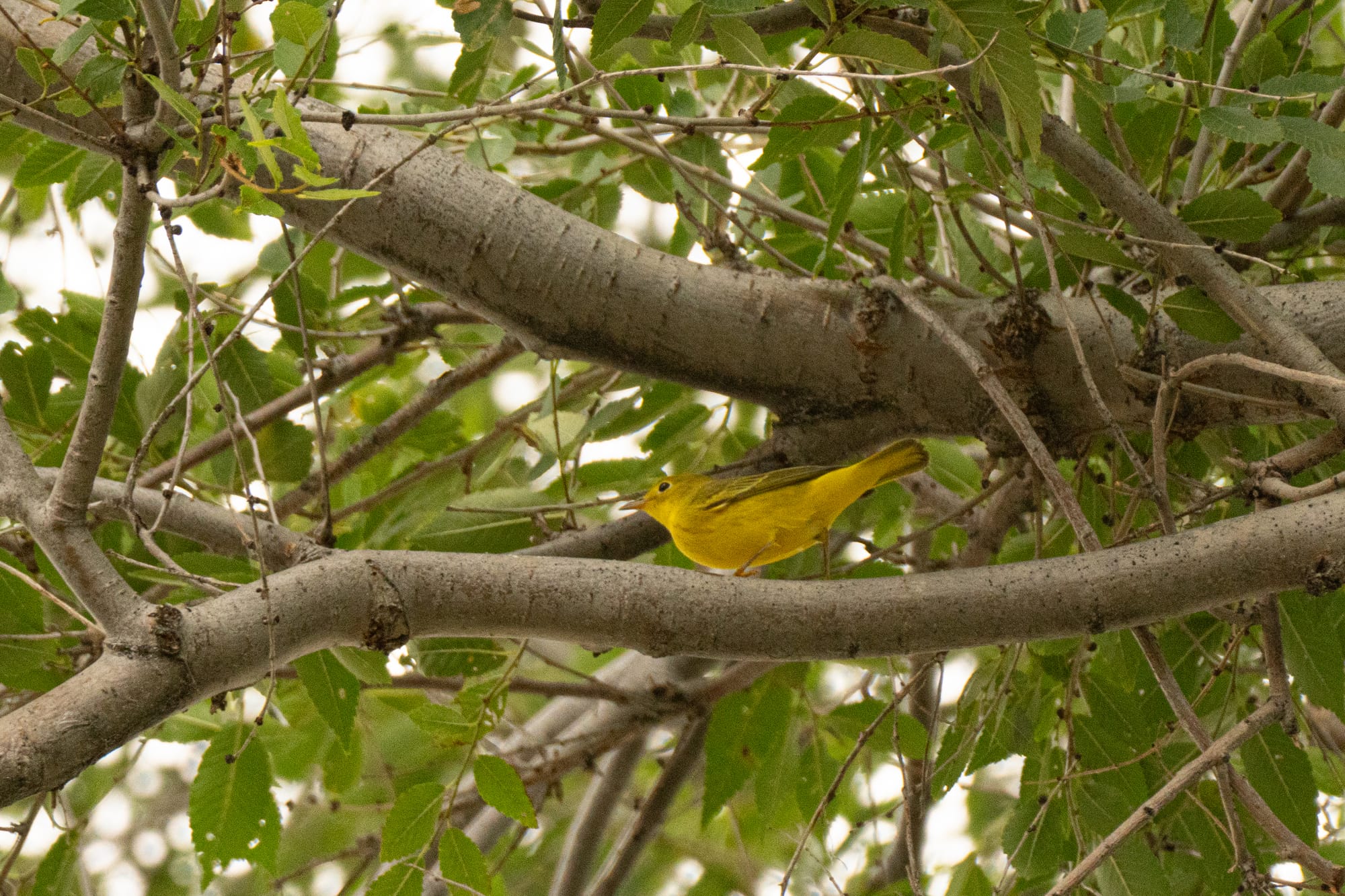
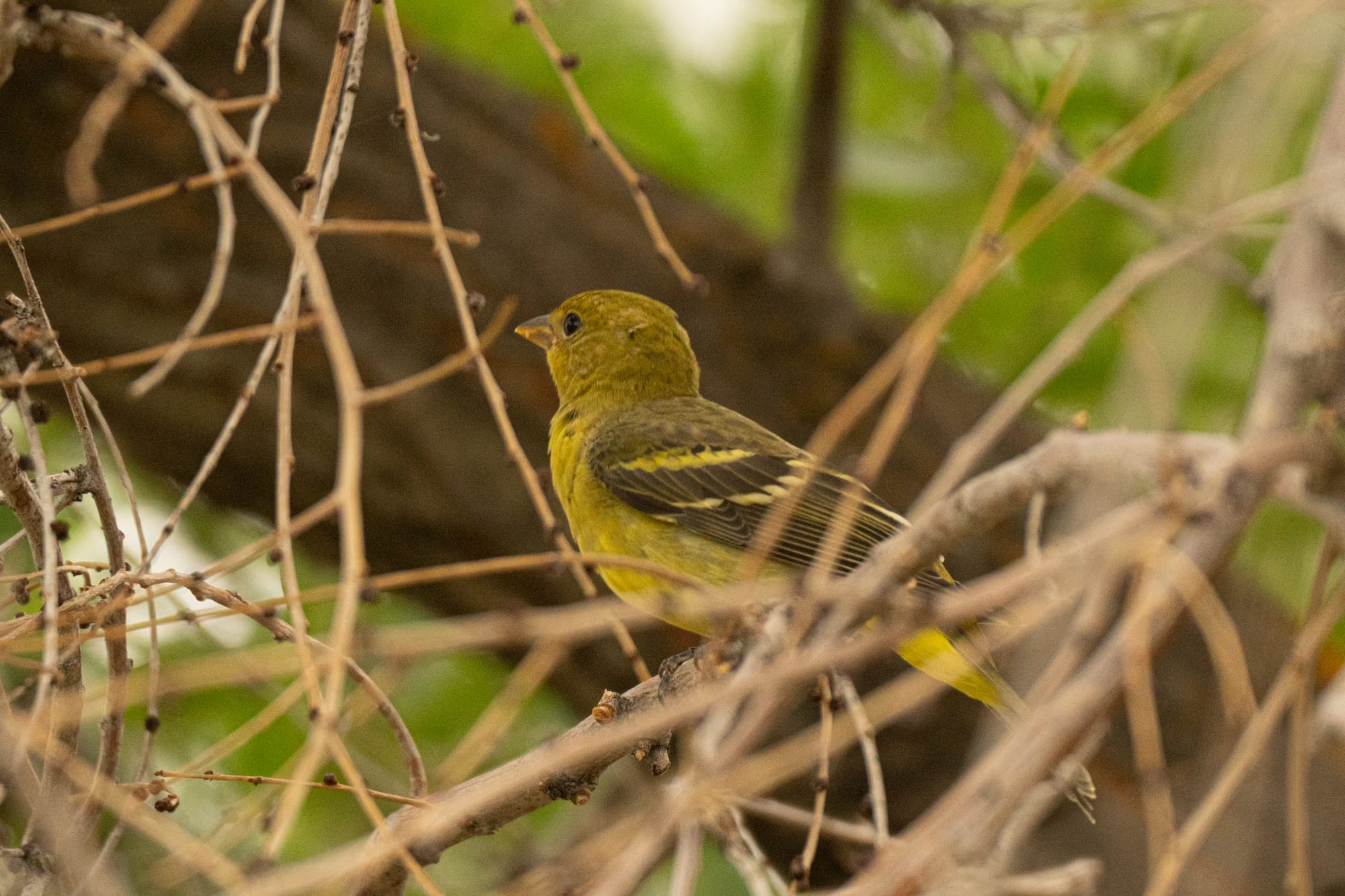
Beyond noticing some signs of the changing seasons, I've also been reminded that there are many other things to see at this time of year. For instance, a couple years ago when Highway 20 over Washington Pass was closed due to a wildfire, I had a chance to walk the highway from the Silver Star Sno-Park to Klipchuck Campground. Along the way I discovered water in a roadside ditch with salamander larvae and over the years it's been driving me crazy not knowing what species they were. I finally had a chance to walk some of the highway at sunrise and find the water again so I could identify the larvae as long-toed salamanders.
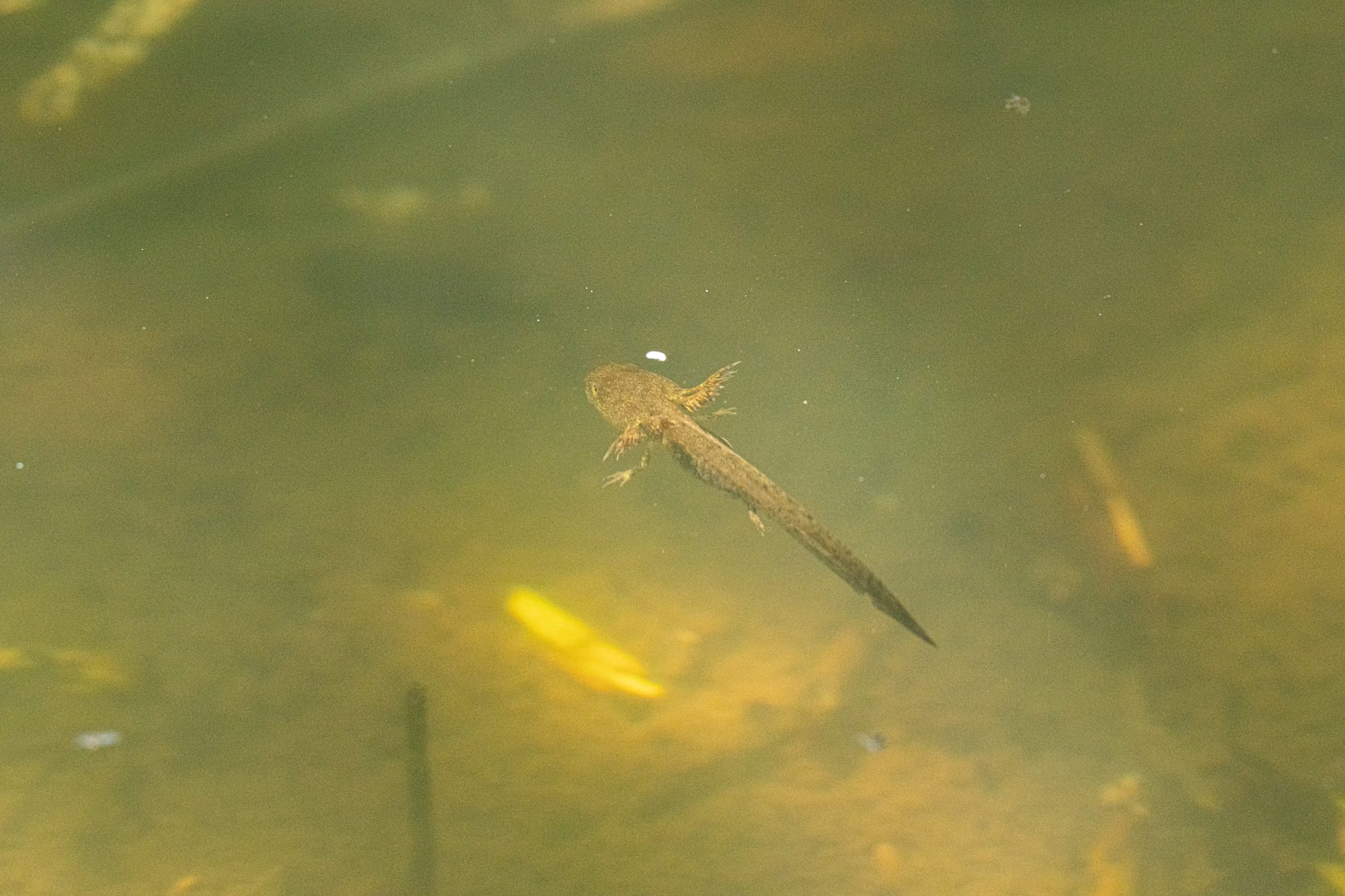
And not only was I surprised by the giant California prionus beetle featured at the top of the newsletter, but I found another really cool beetle that I've never seen before.
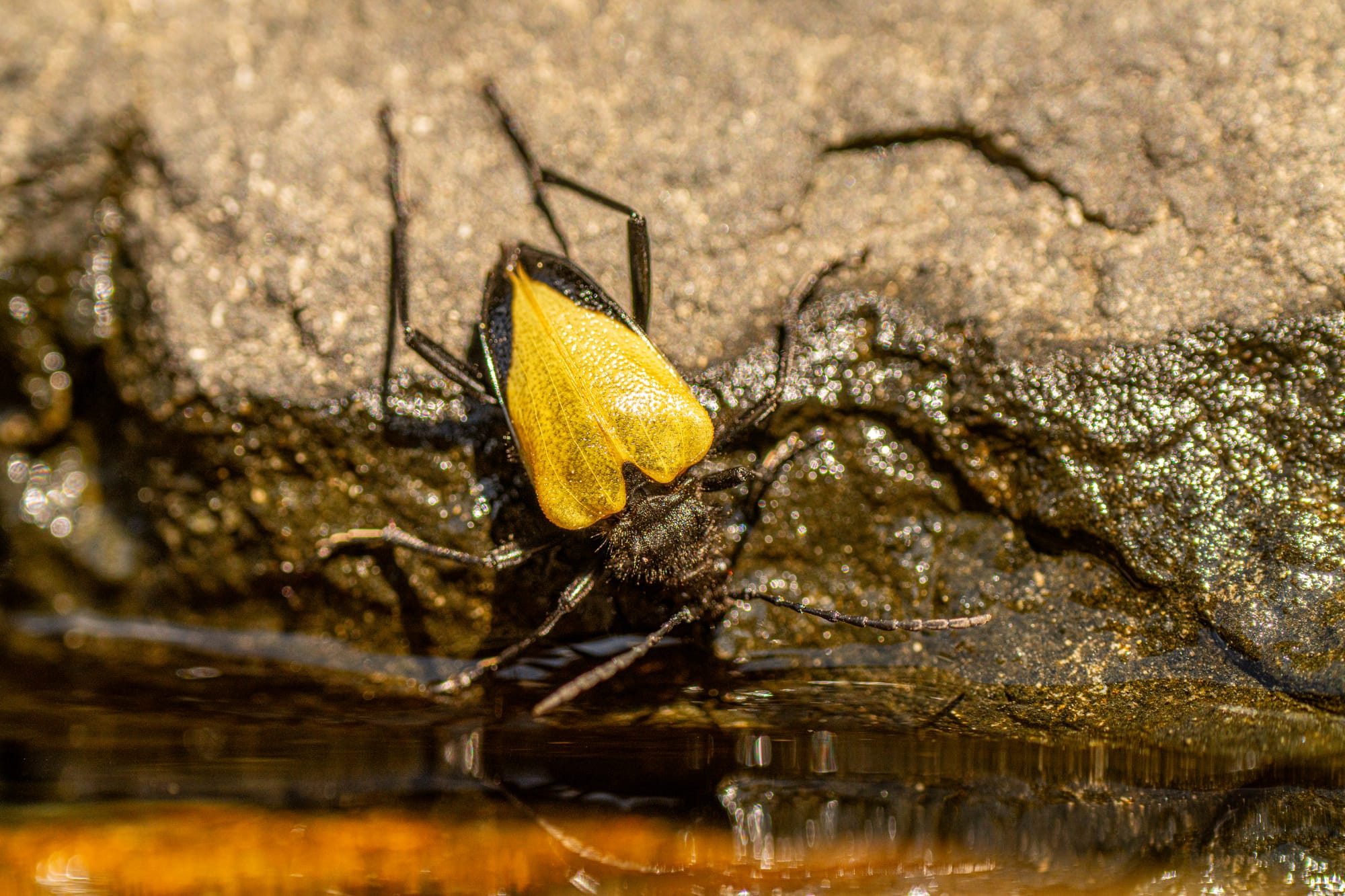
Mountain habitats may be drying out now but the hiking is still delightful, with lots of ripe huckleberries and pockets of flowers, along with pikas and chipmunks actively collecting food for the winter.
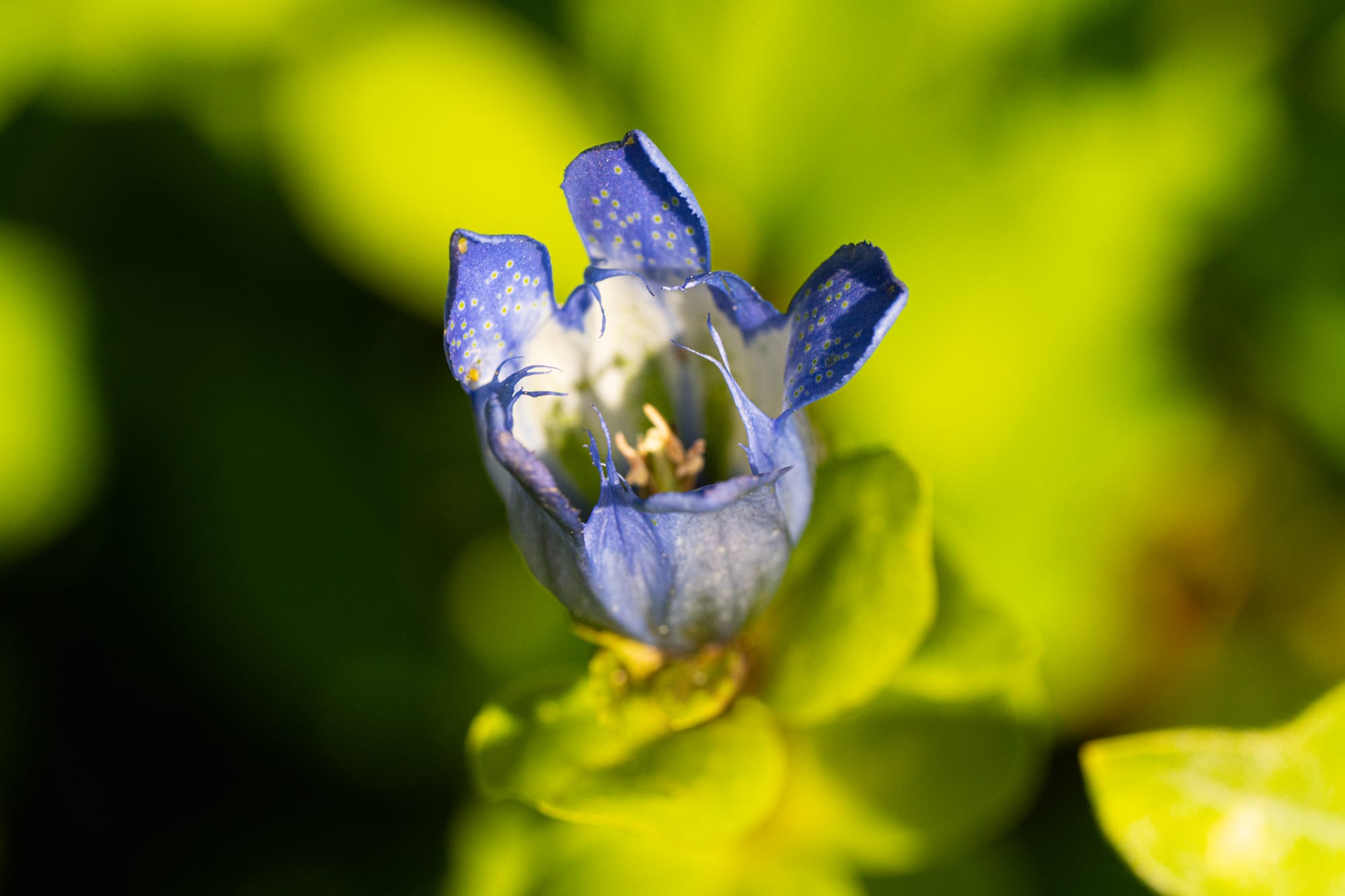
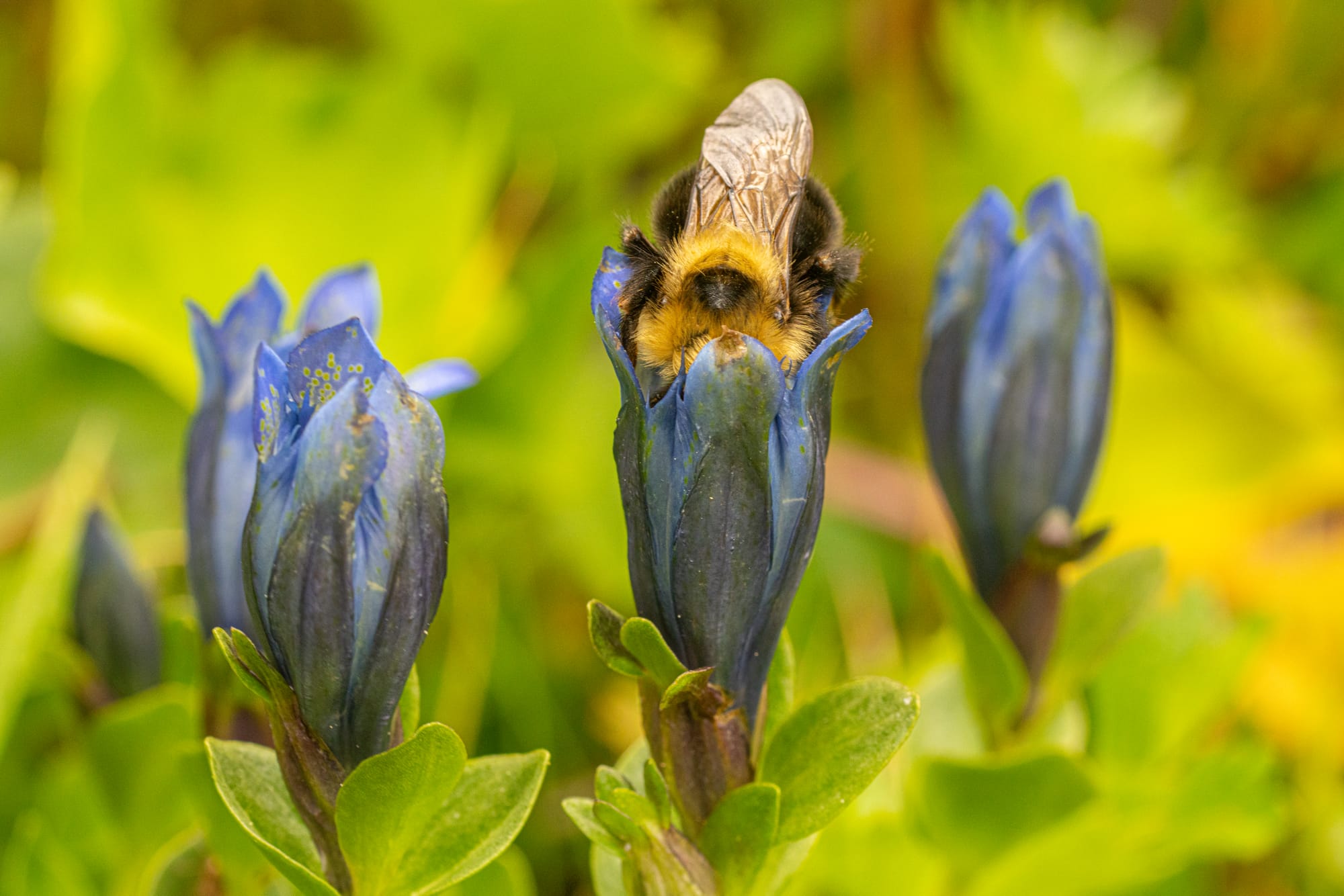
We loved finding meadows of explorer's gentian (Gentiana calycosa) this week. Check out the bumble bee sleeping in one of the flowers. Photos by David Lukas
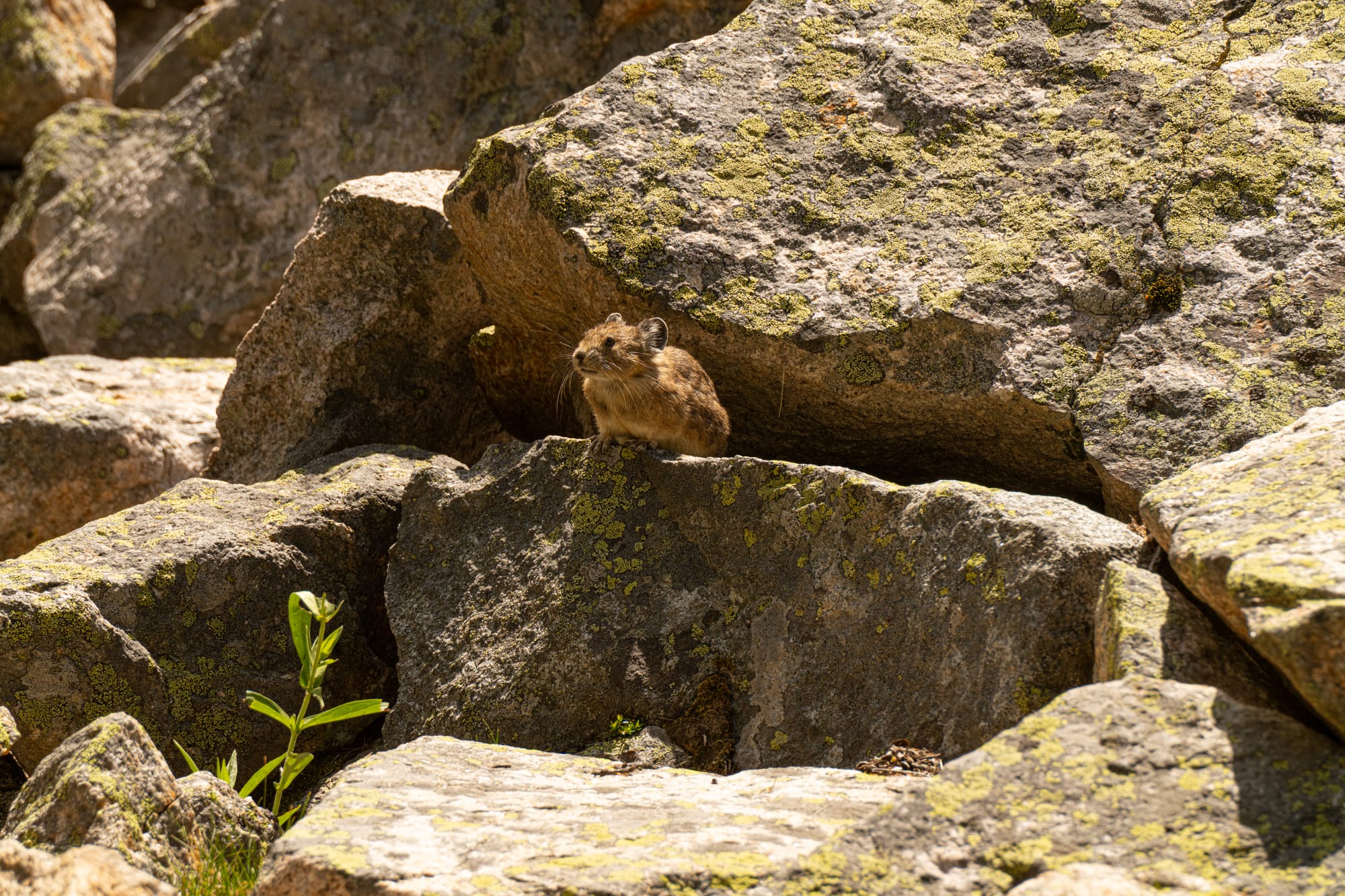
Observation of the Week: Bee Flies
I noticed a bunch of bee flies last week and it got me thinking about these easily overlooked insects. Our most common bee fly looks much like a rotund little bee, hence its common name, but it turns out that bee flies come in a surprising variety of shapes and colors, with many of them looking more like hover flies.
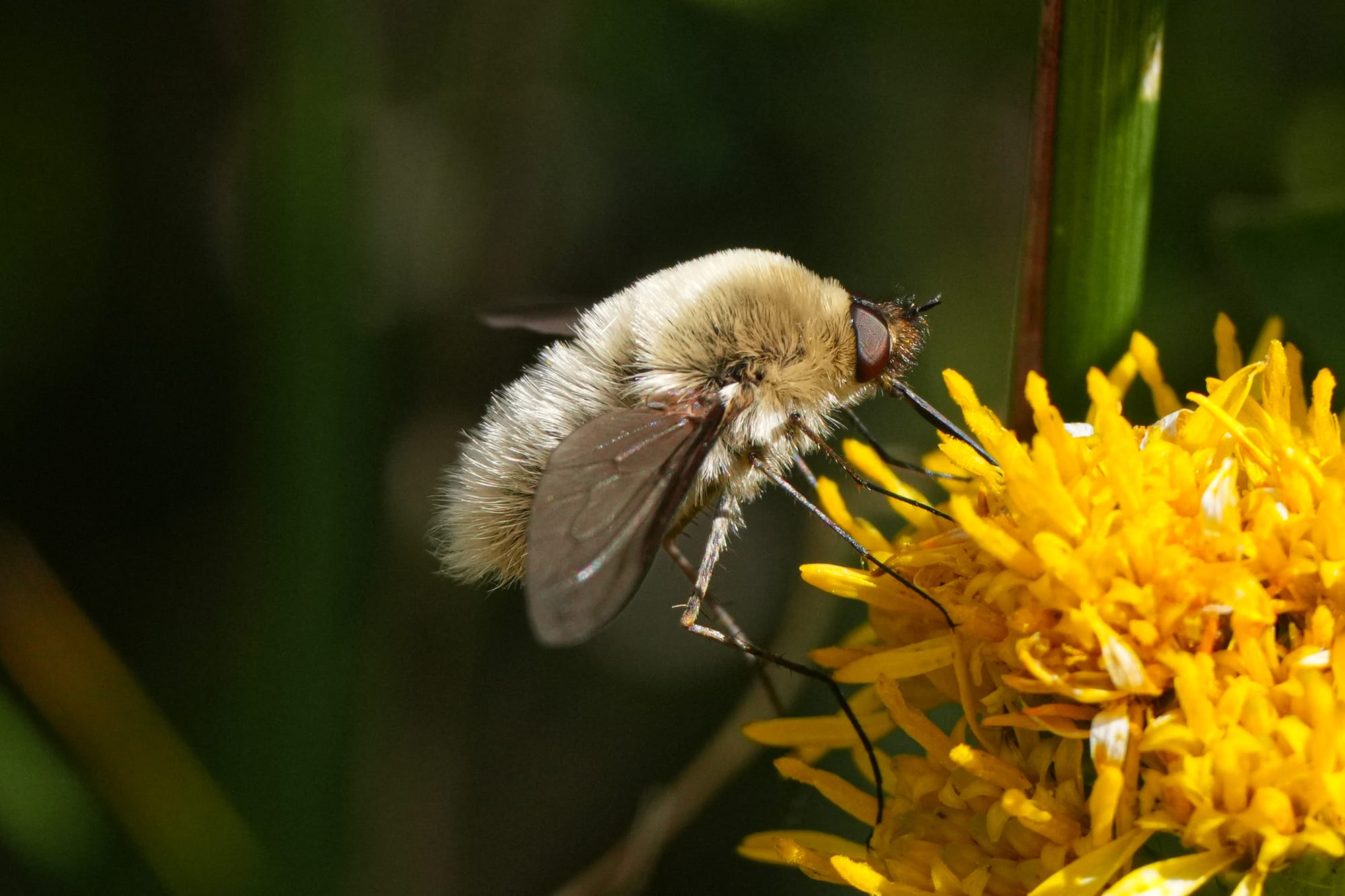
Bee flies spend much of their time either hovering or flying strongly from flower to flower in search of pollen and nectar. One characteristic of bee flies is that they continue hovering, either in mid-air or lightly touching their feet to the petals, rather than landing on a flower. However, unlike similar-looking hover flies, they frequently stop to rest on the ground.
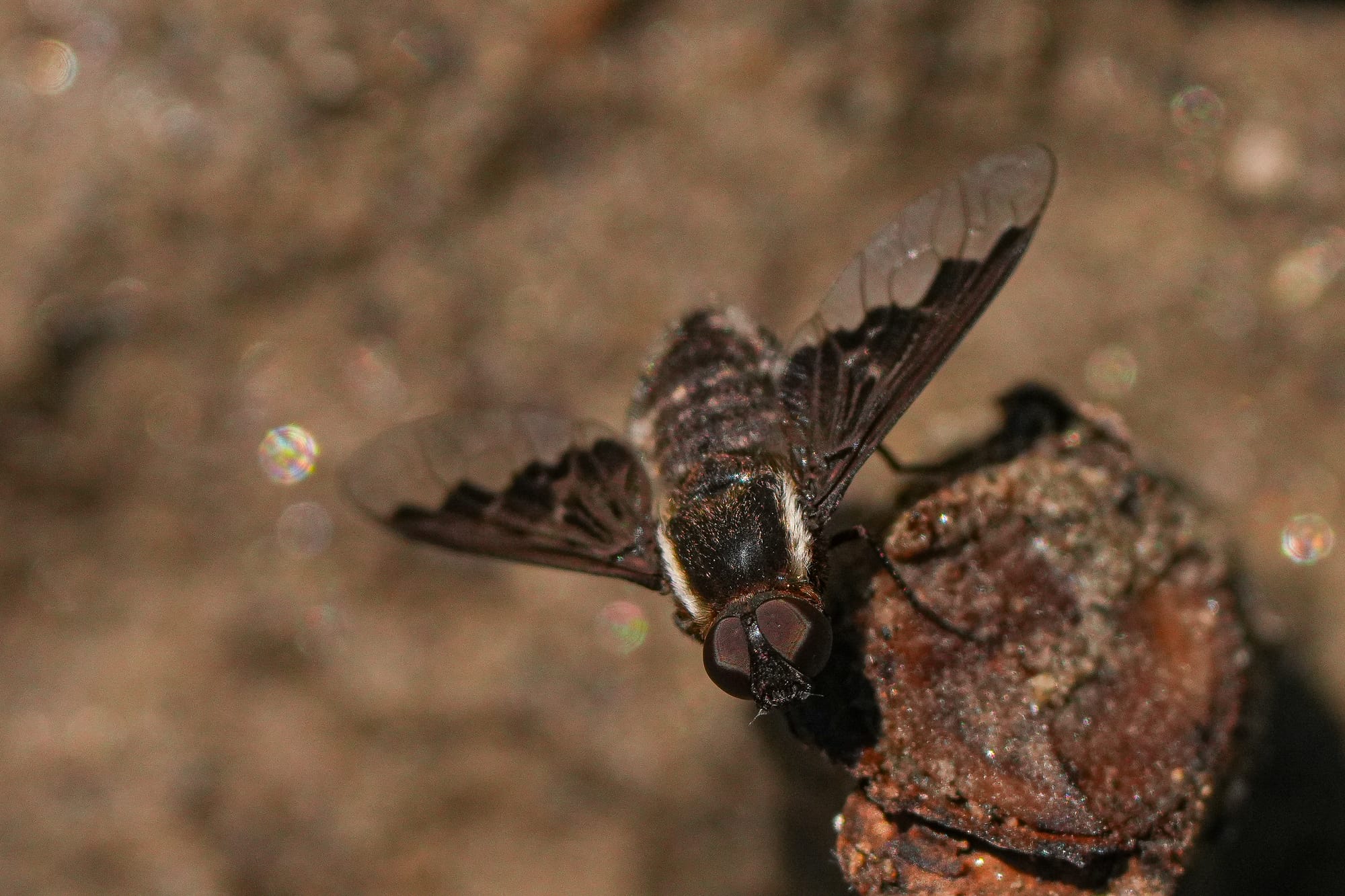
Bee flies are a large family of insects and they are surprisingly important pollinators, a fact that researchers are just beginning to examine more closely as native bee populations plummet.
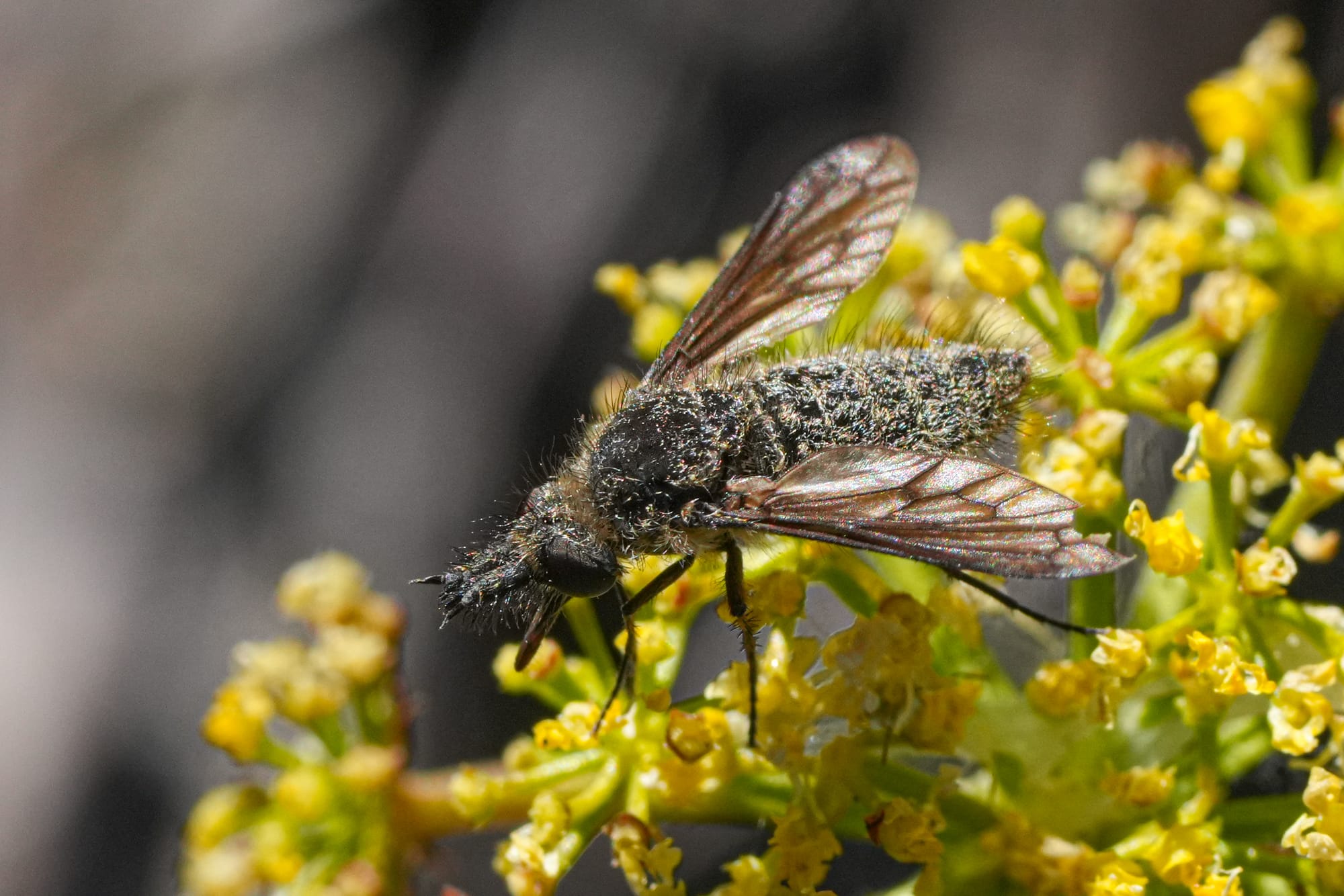
One unique aspect of bee flies is that many species lay their eggs in the underground burrows of solitary bees, and you'll often see female bee flies hovering in mid-air while searching for burrows or waiting for the right moment to drop or fling her eggs towards the burrow entrance (if they land on the ground to lay their eggs they risk being attacked and killed).
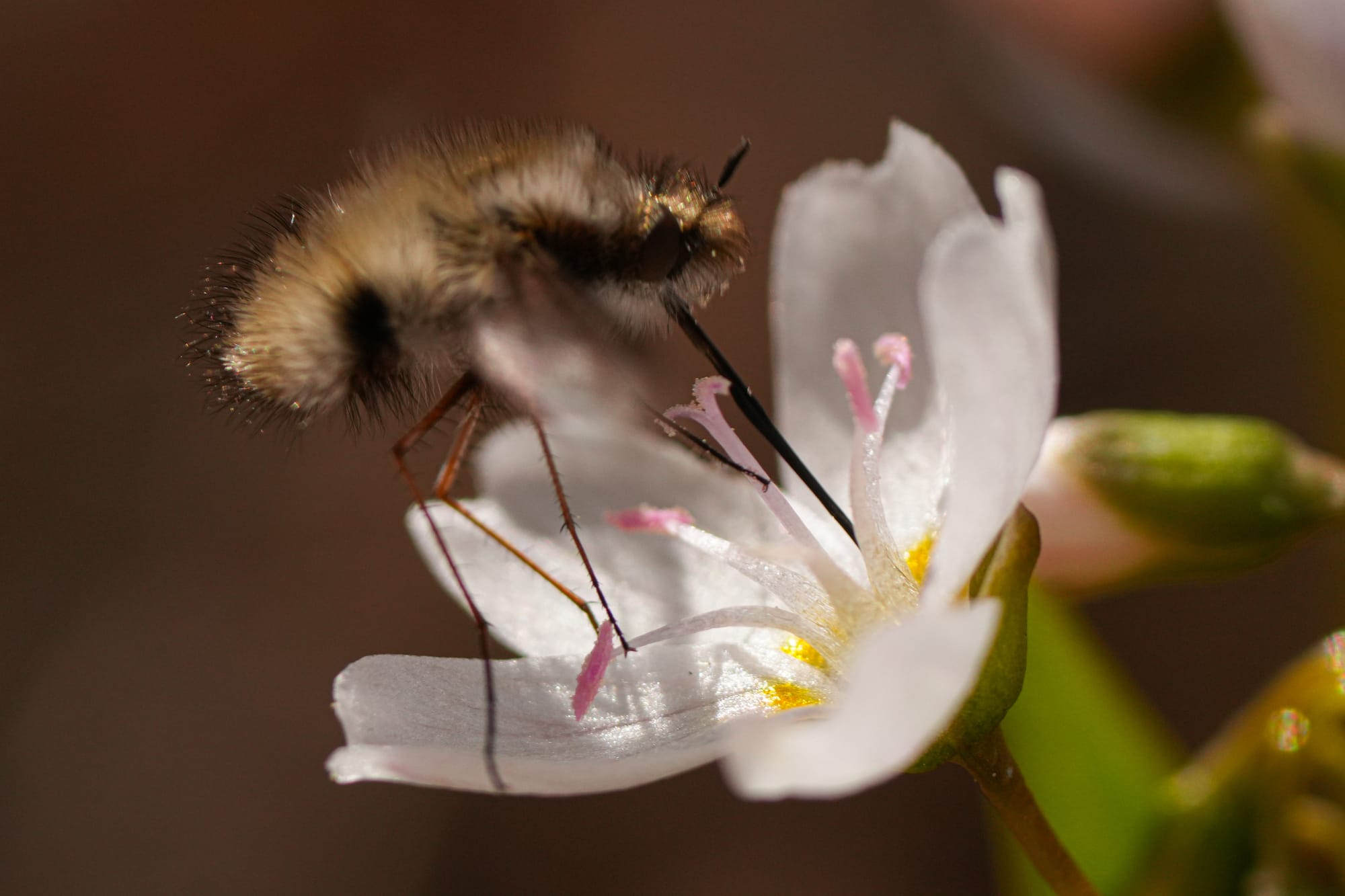
Bee fly larvae first eat the food stored for the larvae of the solitary bee, then finish off by eating the bee larvae themselves before pupating and emerging as adult bee flies the following spring.
Further Reading:

